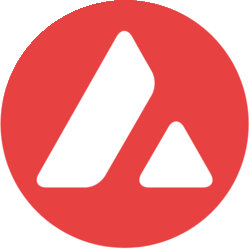KRW1 is South Korea’s first won-backed stablecoin, issued by BDACS on Avalanche and backed 1:1 by deposits at Woori Bank; it enables low-cost, real-time verifiable payments and settlement for public-sector programs while linking banks, institutions, and retail users via scalable blockchain rails.
-
KRW1 is backed 1:1 by Woori Bank deposits and issued on Avalanche
-
BDACS positions KRW1 as a low-cost payment and settlement tool for public-sector and private use cases.
-
KRW1’s launch increases interest in Avalanche and coincides with industry filings and ETF moves in the market.
KRW1 won-backed stablecoin: BDACS issues KRW1 on Avalanche with 1:1 Woori Bank reserves — learn how KRW1 aims to cut costs and enable verifiable public payments. Read more.
What is KRW1 and how is it backed?
KRW1 is a won-backed stablecoin issued by BDACS and deployed on the Avalanche blockchain. Each KRW1 token is backed 1:1 by deposits held in escrow at Woori Bank, and BDACS provides API-driven, real-time reserve verification to enhance transparency and trust.
How does BDACS plan to use KRW1?
BDACS intends to deploy KRW1 as a low-cost payment and settlement tool. The stablecoin targets public-sector initiatives such as emergency relief and fiscal transfers, offering faster disbursement and reduced transaction fees compared with legacy payment rails.
Why is Avalanche important for KRW1?
Avalanche offers the performance, security, and scalability required to connect banks, custodians, and retail users. These technical features make Avalanche suitable for high-throughput settlement and integration with institutional KYC and custody systems.
What is the immediate market impact of KRW1?
The announcement boosted interest in Avalanche, contributing to AVAX price movement; AVAX traded at $32.96 after a 9.38% jump in the last 24 hours, per CoinMarketCap data (reported as plain text). KRW1’s launch also coincides with broader local initiatives and corporate filings in Korea.
What other developments are happening in Korea’s stablecoin ecosystem?
Seoul Finance reported that KOSCOM filed trademarks for five stablecoin-related brands, including KSDC, KRW24, KRW365, KOSWON, and KORWON, and restructured its digital assets division. Separately, Bitwise filed an S-1 with the U.S. SEC to propose an ETF tied to Avalanche (plain text reference).
How does KRW1 compare with major stablecoins?
| Feature | KRW1 | USDC (example) | USDT (example) |
|---|---|---|---|
| Fiat backing | 1:1 won (Woori Bank escrow) | 1:1 USD (varied reserves) | 1:1 USD (varied reserves) |
| Blockchain | Avalanche | Multiple (e.g., Ethereum, Solana) | Multiple |
| Primary use case | Local payments, public settlement | Global payments, trading | Liquidity and trading |
Frequently Asked Questions
Is KRW1 fully reserve-backed and auditable?
Yes. BDACS states KRW1 is backed 1:1 with won held in escrow at Woori Bank, and reserves are verifiable instantly via API integration, providing on-demand transparency to counterparties and auditors.
Can public institutions adopt KRW1 for relief payments?
Yes. KRW1 is positioned for public-sector use such as emergency relief, with BDACS outlining processes for issuance, distribution, and redemption to fit institutional requirements.
Key Takeaways
- KRW1 launch: BDACS issued Korea’s first won-backed stablecoin on Avalanche with 1:1 Woori Bank reserves.
- Use case: Targeted at low-cost payments and public-sector settlement to reduce transaction friction.
- Market context: Coincides with local trademark filings and global ETF interest in Avalanche, emphasizing scale-focused competition.
Conclusion
KRW1 represents a pragmatic intersection of traditional banking and blockchain infrastructure, using Avalanche’s scalability and BDACS’ custody model to offer verifiable, low-cost won settlement. If regulatory frameworks evolve as expected, KRW1 could set technical and operational precedents for stablecoins in South Korea. COINOTAG will monitor developments and report updates.
